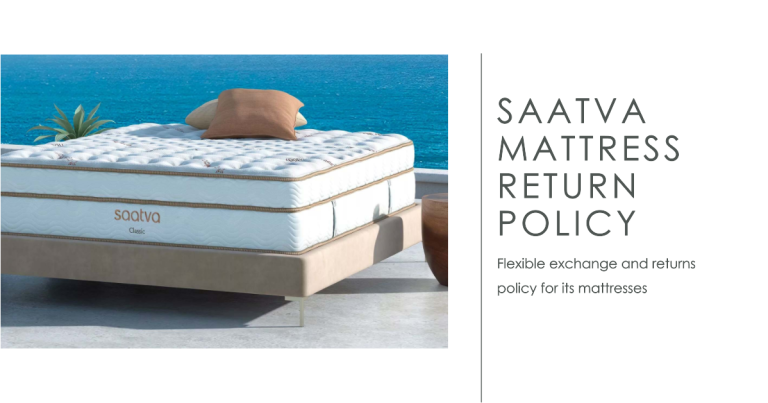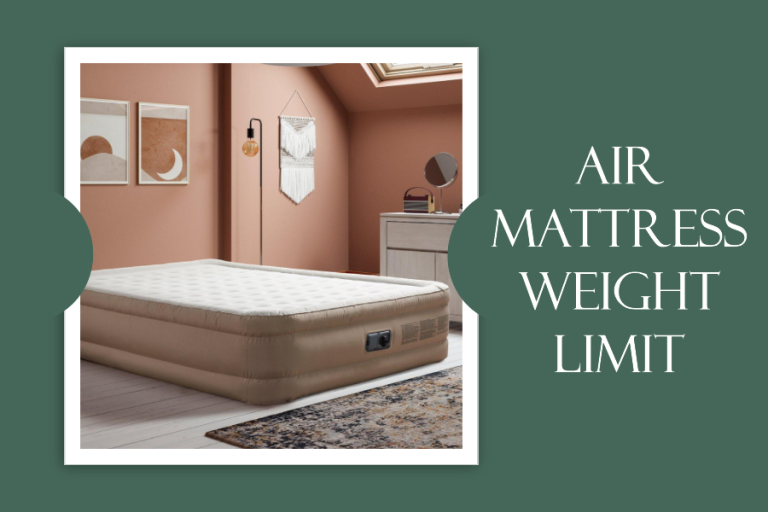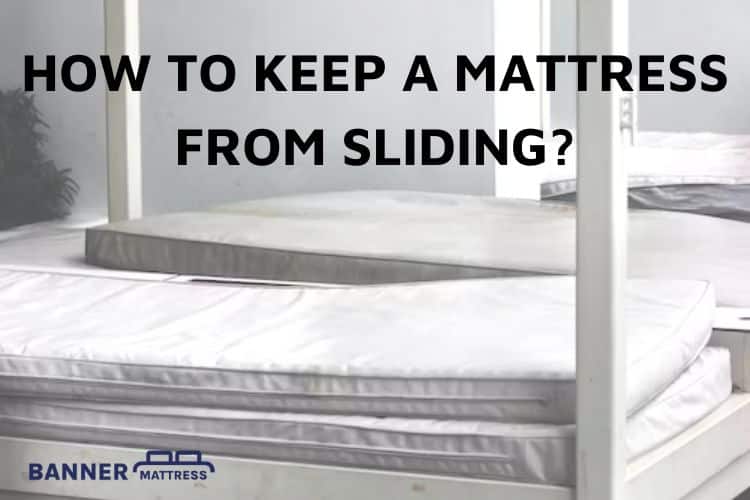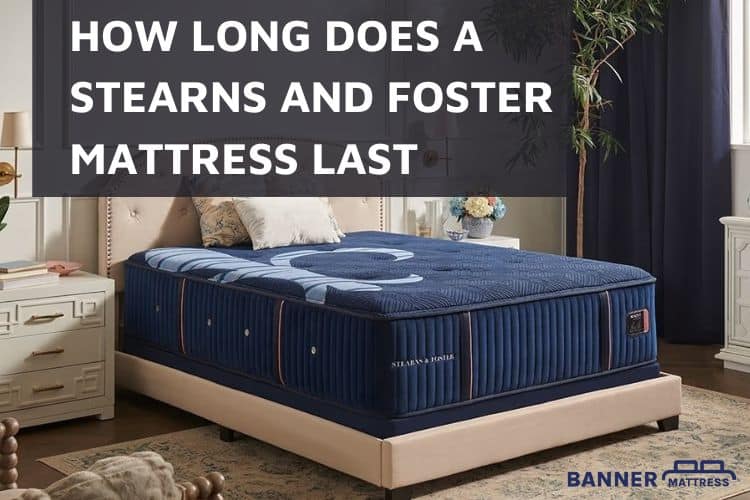Did you notice your mattress sinking in the middle? Do not panic; this problem is quite common since the middle gradually begins to sink over time due to the pressure and weight you place on your mattress. You shouldn’t ignore the signs of sagging as it can lead to several health problems.
This post will walk you through the reasons behind this issue and what you can do to improve the situation. We also provide some ways to delay the onset of sagging issues.
Why Is A Mattress Sinking In The Middle?
You should consider the chance your mattress has gotten somebody’s indentations due to body impressions, and it’s totally normal if your bed does not remain the same after some time. Your bed may have developed a small or significant depression caused by your body pressure, especially in the middle section. You may find it uncomfortable to sleep, and it happens more frequently than you think.
Long-term use of the same sleeping position is normally the culprit, and you will discover that the bed is beginning to sink later. The spot your body resting on is the most popular location for it to happen.
Also, your mattress’s coils and springs deteriorate over time owing to the consistent pressure placed there. No bedding item lasts a lifetime. Obscure, expensive, or inexpensive, they all ultimately wear out, no matter the brand, even if the item is one of several well-known names.
Other notable examples are liquid dispersion (sweat), dust mites, excessive exposure to sunlight, or deteriorating foam. These factors can decrease the bed’s quality over time, losing its original firmness and developing sinking spots.
Is A Sagging Mattress Bad?
Yes. A sagging one won’t be able to provide adequate spinal support, which will give your back discomfort and even back pain.
Your body will conform to the shape of any dips in the bed. While you sleep, the spine will be curved, making it more difficult for your muscles to maintain your body. You might finally end up experiencing back pain while sleeping.
Despite adhering to all the prevention advice, this discomfort might eventually worsen and become a chronic issue. In extreme cases, a sinking bed can force a disc out of alignment, which may result in a bulging or herniated disc.
How Can I Fix A Sinking Mattress?
It is impractical to fix an already sinking one. Once this happens, the only thing you can do to make the issue go away is to get a new item.
Still, there are a few things customers may do to lessen the impact of sagging. Notice that depending on the mattress’s age and the sagging level, these methods have varying degrees of success.
Get A Mattress Topper
An excellent topper can lessen the impacts of a sagging mattress by offering a more level sleeping surface. Toppers are a common choice when someone wants to make their current bed comfier yet isn’t ready to buy a new one.
A mattress topper can make a sinking bed more comfortable to sleep on. It works as an additional layer placed on top of the bed, rendering its surface more even and comfortable.
The typical composition of the toppers, offered separately as accessories, ranges from two to five inches of latex, foam, down substitute, down, feathers, or wool. There are also thick toppers made of denser materials that typically work best to prevent sinking.
While this item won’t solve a sinking bed, it’s a cost-effective interim solution to increase your pleasure and relaxation.
Have A Foundation Replacement
Your bed’s foundation is frequently a factor in premature sinking. You will find that foundations with fewer than six legs provide less support around the mattress’s center, leading to premature drooping.
Sagging problems can also be brought on by foundations that use slats, especially in the regions that lie between the slats’ support. Over time, older foundations may also deteriorate.
Your ideal type of base will rely on a number of variables. The best place to get advice on the foundation type is from the company that made your bed.
Many manufacturers recommend the minimum permitted space between the supporting slats is 2-2.75 inches. The wider they are apart, the higher the chance of sinking.
Read more: Best Mattress Without Box Spring
Use More Pillows
Using more pillows in the drooping parts of the mattress is a temporary fix to stop it from sagging. The finest pillows for this use are those that retain their shape well.
Or you can also place cushions under the bed to support sinking sections. Keep in mind this tactic is not advised since it can hinder even cushioning, hastening the mattress’s aging.
Rotate Your Mattress
Even if it is already sinking, you might still benefit from rotating the bed. Excessive sagging mostly develops in the parts of the bed where the sleeper’s body exerts the most pressure, so the shoulders and hips are the commonly affected areas. Turning your mattress can place your body’s heavier sections on parts that are still firm.
A note to remember is that most mattresses shouldn’t be turned over unless the maker specifically advises it. Since numerous contemporary beds are one-sided by design, flipping them usually results in less comfort and a higher risk of bed damage.
How To Prevent The Mattress Sinking In The Middle?
Preventative maintenance is the greatest option for your mattress’s durability and long-term comfort. The following advice is for anyone who has recently bought a new bed or will be doing so shortly.
Regularly change your sleeping position
Because of the particulars of your sleeping posture and body, this may relieve pressure at some spots and slow sagging. Switching up your sleeping arrangements can increase your bed’s longevity and comfort.
Rotate and flip the mattress every three to six months
This will enable you to utilize more of the bed’s surface area throughout that three-or-six-month period. Even when this is the only strategy you use, it ensures that you sleep on at least four regions of your bed.
Does Warranty Cover Mattress Sagging?
No. A guarantee will normally neither protect a mattress from wear and tear brought on by frequent use nor cover losses resulting from an owner’s carelessness. The majority of sagging is not under warranty because it is seen as natural wear and tear, even though some premature sagging or sinking may qualify as a fault.
Every bedding manufacturer has a few minor variations in their warranties; therefore, it is wise to check the warranty page on a brand’s website. However, many of the well-known brands share certain similarities.
Most mattress warranties also cover physical flaws that were not caused by the consumer, such as the box spring breaking, the bed seams falling apart, the coils bulging out of the side, or the foam on top bunching up.
Although it’s wonderful to have warranties, they typically only serve to take manufacturing errors into account. We always advise calling customer service and thoroughly outlining your concern before expecting the issue to be taken care of by the warranty policy.
When To Replace Your Mattress
You should consider getting a new item when you see any of the following signs.
- Wear-and-tear indicators: Sinking, coils, and lumps visible through the cloth indicate wear and tear
- Squeaky springs: When you move around if the springs squeal, your spring’s coils are worn out and no longer offer the support they are supposed to
- Muscle rigidity: You can awaken feeling stiff and painful if your bed is uncomfortable and no longer cushions your body the way it once did
- Notice your movement: A worn-out one can minimize motion transfer, making your movement more difficult.
Read more: How Long Does A Tempur-Pedic Mattress Last
Conclusion
Back problems and poor sleeping habits likely result from a sagging mattress. All products eventually lose shape, and the mattress sinking in the middle is an inevitable problem. Yet, you can extend the time before this issue arises by following our tips above.
Also, take a look at this video for a quick rundown of the reasons for a mattress sinking in the middle:
FAQs
The easiest way to stop the sinking problem is by changing your sleeping position frequently. You can avoid putting too much weight and pressure on the same spot over and over again, which will ultimately save your bed from sinking.
The short answer is no. A brand-new one should not sink, but it occasionally does, depending on the condition of the box spring base or the quality of the manufacturing process. One of these problems may be the cause of the sinking.
No, a dip is, unfortunately, impossible to bounce back from. The only real fixes are sending it in for repairs at the manufacturer or replacing it entirely. Still, there are some methods you can try, such as rotating the bed, changing your sleep posture, etc., to minimize the chance of getting unpleasant dips in your bedding item. Check out the section above where we already gave you the full explanation.









